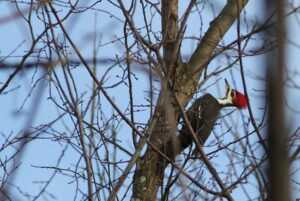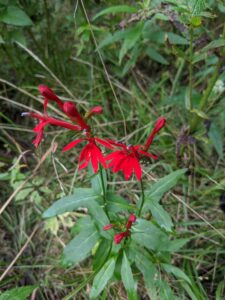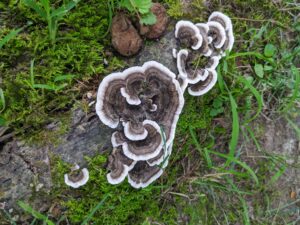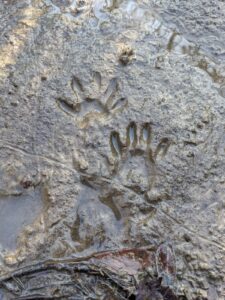Ask The Land
The initial Ask the Land (ATL) survey began in April 1997 and continued through October 1997. This survey confirmed what many visitors to Shepherd’s Corner had recognized; that the site is ecologically rich and valuable. Over 650 species of fungi, plants, and animals were identified on the property. This includes approximately 320 plant species, numerous invertebrate species (e.g., snails, spiders, and insects), over 20 fish species, eight amphibians, six reptiles, and 13 mammals. In addition, around 105 bird species were seen or heard. Our 160 acres has seven habitats: garden, hay field, old field, woodland, wetland, pond, and stream (Blacklick Creek).
In 2015, the ATL survey was re-visited with the assistance of volunteers and a Columbus Foundation grant which allowed for a summer intern. The new survey counted butterflies, wildflowers/plants, and birds. Shepherd’s Corner continues to add to the data and appreciates any additional volunteers to help with this task.
You can access the original 1997 ALT document here.
Linked to the pictures you will find lists of the plants and wildlife that were observed here at Shepherd’s Corner.
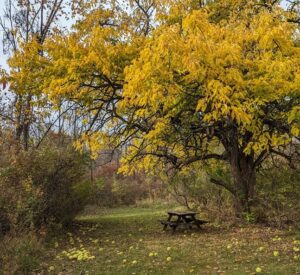
This picture of an Osage Orange tree links to trees, shrubs, and vines which were identified on the property.
Click on this pileated woodpecker and you will be linked to the birds observed.
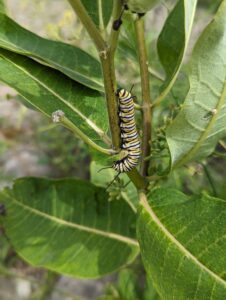
This beautiful monarch caterpillar links to dragonflies, damselflies, moths, and butterflies.
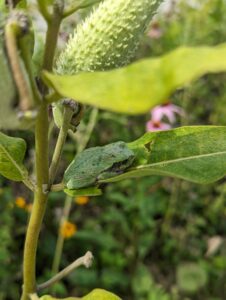
From this frog, you can access the fish and amphibians that were found.
This cardinal flower will take you to see the new plants found that were not noted in the 1997 ALT survey.
Click the mayapple above to access plants which have been found during both ATL surveys.
This turkey tail fungus will take you to the moss, fungi, and lichen found here at Shepherd’s Corner Ecology Center.
The opossum tracks above will take you to the mammals that inhabit our land.
Below you will find a few pictures from our 2015 Ask The Land Survey.
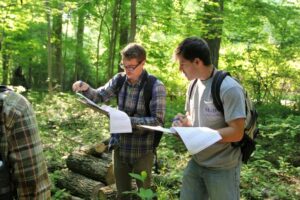
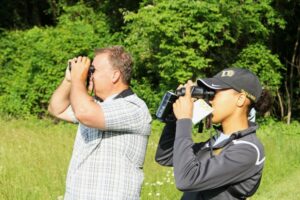
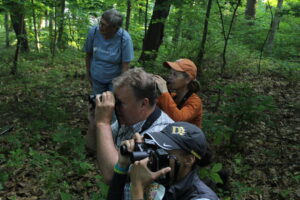
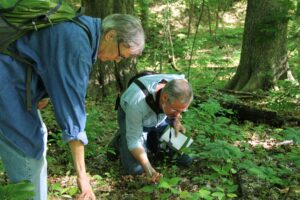
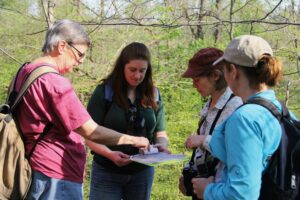
We at Shepherd’s Corner Ecology Center are driven to protect the biodiversity of the land that we occupy. Our wildlife survey, Ask The Land, centers on being aware of what species share the same woods we walk. As Pope Francis states in Laudato Si’, our forests, woodlands, and species that inhabit these ecosystems are important and must be protected.
“The earth’s resources are also being plundered because of short-sighted approaches to the economy, commerce and production. The loss of forests and woodlands entails the loss of species which may constitute extremely important resources in the future, not only for food but also for curing disease and other uses. Different species contain genes which could be key resources in years ahead for meeting human needs and regulating environmental problems.”
-Pope Francis, Laudato Si’ 32
“It is not enough, however, to think of different species merely as potential “resources” to be exploited, while overlooking the fact that they have value in themselves. Each year sees the disappearance of thousands of plant and animal species which we will never know, which our children will never see, because they have been lost for ever. The great majority become extinct for reasons related to human activity. Because of us, thousands of species will no longer give glory to God by their very existence, nor convey their message to us. We have no such right.”
-Pope Francis, Laudato Si’ 33
Shepherd's Corner
Our Vision:
Shepherd’s Ecology Center is positioning itself to be an Earth-centered leader in the Central Ohio community: teaching environmental education, offering reflective experiences on care of creation, and renewing the land while providing healthy, naturally grown produce.
Our Mission:
Shepherd’s Corner Ecology Center invites others to join with us in experiencing the joys and responsibilities of caring for land, life, and spirit. Inspiring others to become shepherds of creation in their own corners of the world.
